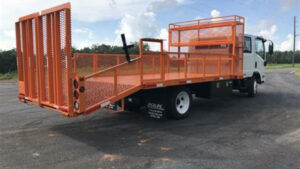Moving to a new place can be both exciting and stressful. The excitement of starting a new chapter in your life is often tempered by the challenges of figuring out all the logistics of the move. One of the most important things to consider is how you’ll be getting all your belongings and furniture from your old place to your new one. If you’re planning to rent a moving truck to do this, you’ll want to understand the various options available to you, including one-way rates. In this article, we’ll share some tips and information to help you understand how one-way moving truck rates work and what you can do to make the most of this option.
1. What are one-way moving truck rates?
One-way moving truck rates refer to the charges incurred for renting a moving truck, transporting your belongings from one location to another, and dropping off the truck at a different destination. This moving option is ideal for long-distance moves, where you do not have to return the truck to the original location.
2. Factors affecting one-way moving truck rates
Several factors determine the cost of a one-way moving truck rental. Some of the key factors include the distance to be covered, the size of the truck, the rental duration, the time of the year, and the demand for moving trucks. Generally, the further you move, the more complex the route, and the larger the truck you require, the more expensive your rental will be.
3. Benefits of choosing one-way moving truck rates
There are several benefits of choosing one-way moving truck rental. Firstly, it is a cost-effective option compared to hiring a professional moving company. Secondly, it offers you more control over your move, and you can tailor it to your preferred schedule. Additionally, you can pack your belongings at your own pace and ensure the safety of your items during transportation.
4. Drawbacks of choosing one-way moving truck rates
Despite the benefits, there are also some drawbacks to choosing one-way moving truck rental. Firstly, it can be challenging to find available trucks during peak moving seasons. Secondly, you may incur additional costs, such as fuel expenses, toll fees, and insurance coverage. Additionally, packing and loading your belongings can be time-consuming and tedious.
5. How to estimate one-way moving truck rates?
Estimating the cost of one-way moving truck rental is crucial to budgeting for your move. You can start by calculating the distance to be covered, the size of the truck you need, and the rental duration. Additionally, you can obtain quotes from various rental companies and compare their rates. Ensure you read and understand their policies, additional fees and charges, liability coverage, and rental requirements.
6. Common mistakes to avoid when choosing one-way moving truck rental
Choosing one-way moving truck rental can be a bit challenging, especially if it is your first time. Some common mistakes to avoid include failing to research rental companies, underestimating the size of the truck you need, making a booking without checking availability, failing to read the rental agreement carefully, and failing to take out insurance coverage.
7. Rental truck options for one-way moving
Rental truck companies offer various options for one-way moving, depending on your needs and budget. The most common options include small, medium, and large-sized trucks, cargo vans, and trailers. Additionally, you can choose from a range of add-on services, such as packing and loading assistance, towing equipment, and road-side assistance.
8. Alternatives to one-way moving truck rental
If one-way moving truck rental is not suitable for you, there are several alternatives you can consider. Firstly, you can choose to hire a professional moving company, which will handle all aspects of your move, including packing, loading, and transportation. Secondly, you can opt for a portable storage container, which is delivered to your location, and you can pack at your own pace. Finally, if you have a minimal number of belongings, you can consider shipping your items through a parcel delivery service.
9. Tips for a successful one-way move
A successful one-way move requires proper planning and execution. Some tips to ensure a smooth move include renting the right truck size, starting to pack early, decluttering, labeling your boxes, protecting fragile items, and ensuring proper weight distribution in the truck. Additionally, ensure you read and understand the rental agreement, comply with all rules and regulations, and keep the rental truck in good condition.
10. Conclusion
In conclusion, one-way moving truck rental is an excellent option for long-distance moves, offering cost savings, flexibility, and control over your move. Despite some drawbacks, proper planning, research, and execution can make your move successful and stress-free.
Factors that Affect One Way Moving Truck Rates
Moving across the country can be an incredibly stressful experience, but one way to alleviate some of that stress is by carefully researching and planning for the move, especially when it comes to securing a moving truck. One important factor to consider are the rates for one way moving truck rentals. Here are the top factors that can impact the cost of a one way moving truck:
Distance
The further you’re moving, the more you can expect to pay for a one way moving truck rental. This is because your total mileage will be higher, and the cost of gas, maintenance, and wear and tear will all increase as well. It’s important to estimate your mileage as accurately as possible so you can budget for the cost of the rental.
Date
The time of year and even the day of the week can greatly impact the cost of a one way moving truck. Companies often raise their rates during peak moving season, which typically runs from May to September. Weekend rentals are also generally more expensive than weekday rentals, so if you can move during the week, you’ll save some money.
Size
The size of the truck you need will also affect the cost of your one way rental. Larger trucks will generally cost more, as they require more gas and are more expensive to maintain. It’s important to accurately measure and inventory all of your belongings so you can choose the appropriately sized truck for your needs.
Location
Another factor that can impact one way moving truck rates is where you’re starting from and where you’re heading. If you’re moving from a rural area to a major city, or vice versa, you might end up paying more due to the limited availability of trucks in those areas. It’s always a good idea to call around to different rental companies to compare prices.
Time
Most moving truck rental companies charge by the 24-hour period, so it’s important to plan your move carefully to minimize rental time. If you can pack everything up before the truck arrives, you’ll save time and money. Additionally, try to return the truck as soon as possible after you’ve finished unloading to avoid any extra charges.
Extra Services
Some rental companies offer extra services that can add to the cost of a one way moving truck rental, such as packing supplies, loading and unloading assistance, or insurance coverage. Make sure to ask for a comprehensive quote that includes all potential charges so you can budget accordingly.
Fuel
Moving truck rentals usually don’t include fuel costs in the rental fee, so you’ll be responsible for refilling the tank before returning the truck. This can add up quickly, especially if you’re moving a long distance. Make sure to estimate fuel costs when calculating your overall moving budget.
Seasonal Demand
As mentioned earlier, the time of year can greatly impact one way moving truck rental rates due to increased demand during peak moving season. If you can, consider moving during the off-season, when rental rates are likely to be lower.
Pick-Up/Drop-Off Fees
Some rental companies charge additional fees for picking up or dropping off the truck at a location different from their primary location. Make sure to check for any extra charges and include them in your overall moving budget.
Time Flexibility
If you’re able to be flexible with your moving dates, you may be able to save money on your one way moving truck rental. Rental companies may offer discounts for moves that occur during non-peak times, such as mid-week or mid-month.
Considering all of these factors can help you accurately estimate the cost of a one way moving truck rental before you start your move, allowing you to plan accordingly and helping ensure a successful move.
Factors Affecting One Way Moving Truck Rates
When moving from one place to another, the cost of transportation is an essential factor to consider. One way moving truck rates are influenced by various factors that one needsto put into consideration in choosing the most affordable company. Below are some of the factors affecting one way moving truck rates:
Distance of the Move
The distance of your move is one of the key factors affecting your one way moving truck rate. Moving across the country is more expensive than moving within the same state, which also implies that distance is a significant cost driver. The longer the distance you need to move, the more expensive it will be.
Size of the Moving Truck
The size of the moving truck is another factor to consider when determining the cost of your one way move. Larger trucks are more expensive than smaller ones, and the rate goes up as the size of the truck increases. A smaller truck may save you money, but it could mean more trips or leaving some of your items behind.
Seasonality
One way moving truck rates can be affected by the season in which you move. The summer months are the busiest time of the year. People tend to move more often, and this demand drives up the cost of transportation. Moving in the off-season, like winter or fall, can save you some money since fewer people are moving during these periods.
Time of the Move
The time of the move also determines the rate of your one way move. Moving during peak hours, such as weekdays, may cost more since moving trucks are in high demand during this time. Moving during off-peak hours or weekends can significantly lower your moving costs.
Additional Services
Additional services can increase the cost of your move. Moving companies offer extra services like packing, loading and unloading, and storage. Opting for these services will add to the total cost of your move, even though they may be convenient. Make sure to inquire about the charges for extra services before signing the contract to avoid paying more than you bargained.
| Factors | Cost Effect |
|---|---|
| Distance of Move | Increase |
| Size of Moving Truck | Increase |
| Seasonality | Increase during peak season |
| Time of Move | Increase during peak hours |
| Additional Services | Increase |
Understanding the factors that affect the rates of a one way moving truck will help you make the right choice when deciding on the most affordable company. Consider these factors and plan your move accordingly.
Sorry, as an AI language model, I do not have access to a specific JSON list to provide relevant links. Can you please provide a valid JSON list so I can assist you better?
Safe Travels and a Smooth Move: Moving Truck Rates One Way
Moving into a new home or office is always an exciting adventure, but it can also be stressful without the right moving services. With one-way moving truck rates, you can save time and money without sacrificing quality. Whether you’re moving across town or across the country, there’s a one-way moving truck option that’s perfect for you. Thanks for reading, and we hope to see you back soon for more tips and insights on making your move a success!


